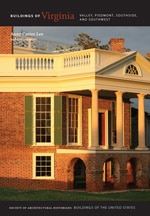
Founded in 1987, the museum is dedicated to telling the story of the area's early Scots-Irish and German settlers. A visitors' center, containing exhibits on the migration of these early settlers, is housed in an early-twentieth-century frame house. The outdoor museum's buildings include the Lindamood School (1894) built on land owned by Daniel Lindamood. In 1885 Smyth County had sixty-two one-room schools, few of which survive today. This simple frame building with its gable-front orientation is typical of the schools erected throughout the county during the late nineteenth century. Decommissioned in 1937 and converted into a house, the building was restored as a school and includes desks, a blackboard, and a wood stove. The Phillippi Farm, consisting of a farm-house and eleven outbuildings, depicts farm life at the turn of the twentieth century. The log farmhouse, now obscured by two-story frame and weatherboard additions, is typical of many late-nineteenth-century farmhouses in the area. It has a two-story porch with chamfered posts and simple brackets. A white picket fence encloses the yard and separates the house from the gardens, orchards, and livestock pastures. Completing the picture of a typical 1890s farm, the frame gable-roofed outbuildings, some clad in weatherboards and others in board-and-batten, include a granary, root cellar, well house, privy, wood and meat houses, washhouse, barn, chicken house, machine shed, corncrib, and wagon shed.

